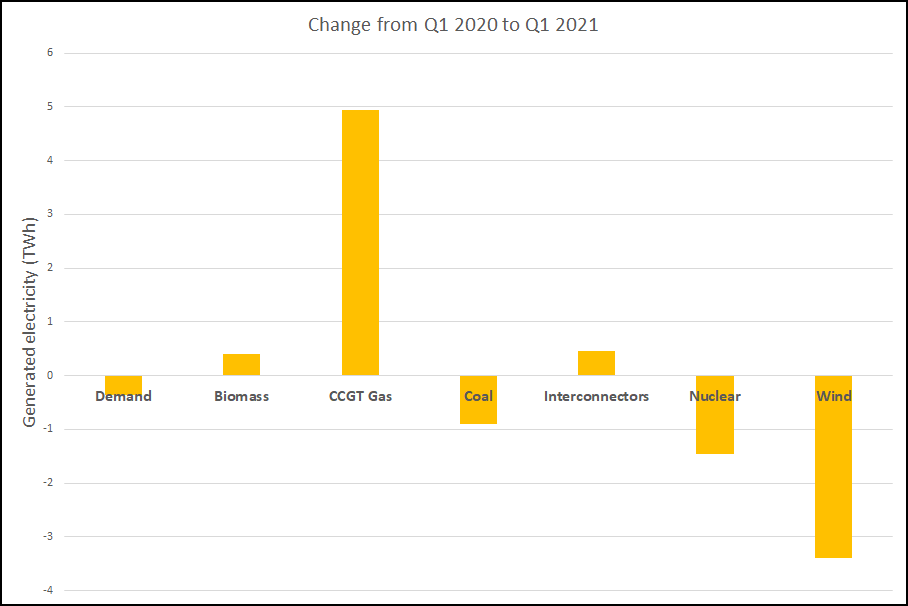Having problems with wind?
8 April 2021
Early in 2020 we started to see the effects of the pandemic on electricity demand in Great Britain. One year later what effect has the changing demand had, and how has the weather affected supply?
We've looked at the first 3 months of 2021 and compared them with the first 3 months of 2020. This chart shows the changes in grid demand and major supply sources.

The data here are from the Elexon website.
The first thing to note is that demand (actually Transmission System Demand) was only very slightly lower, so a comparison in supply figures between the quarters is valid.
Less was generated from coal in Q1 2021 than in the same period in 2020. This is obviously good, although one should bear in mind that the National Grid's 5 year forecast for coal for the whole of 2021 was passed by 4 January. Also, note that coal is still used extensively at times. For example, during w/c 1 March 2021 for 40% of the week coal was generating more electricity than the total produced by all onshore and offshore wind farms. We can't really consider that some days without coal when the wind is at the right strength means we don't need it at all.
Generation from nuclear sources also fell (although we imported a lot of electricity from France, where nuclear is the main source).
However, the main problem was the very dramatic drop in generation from wind. It was down by almost 20%. Why was that? Well, it was because of the weather, which we can't change. If it's not windy, it's not windy. Wind, and therefore output from wind turbines, is not controllable. (Being too windy can also be a problem, of course.)
So, how do we deal with such a dramatic drop? The answer has been the same for some time. We turn up the gas.
The National Grid's 5 Year Forecast says that generation from gas will have reduced by about a half by 2025 (with coal totally gone). If we don't achieve this forecast significant reduction in generation from gas, how will we achieve our ultimate emissions targets?
So, what is the plan to deal with situations like this one, particularly as electricity demand is forecast to increase considerably as other changes happen, such as the switch to electric vehicles?
The longer term approach is to use more storage (including vehicle-to-grid) and increased interconnector capacity, coupled with significant use of hydrogen. However, none of these will be significant for several years yet.
What will happen in the meantime? Keep burning gas, perhaps?